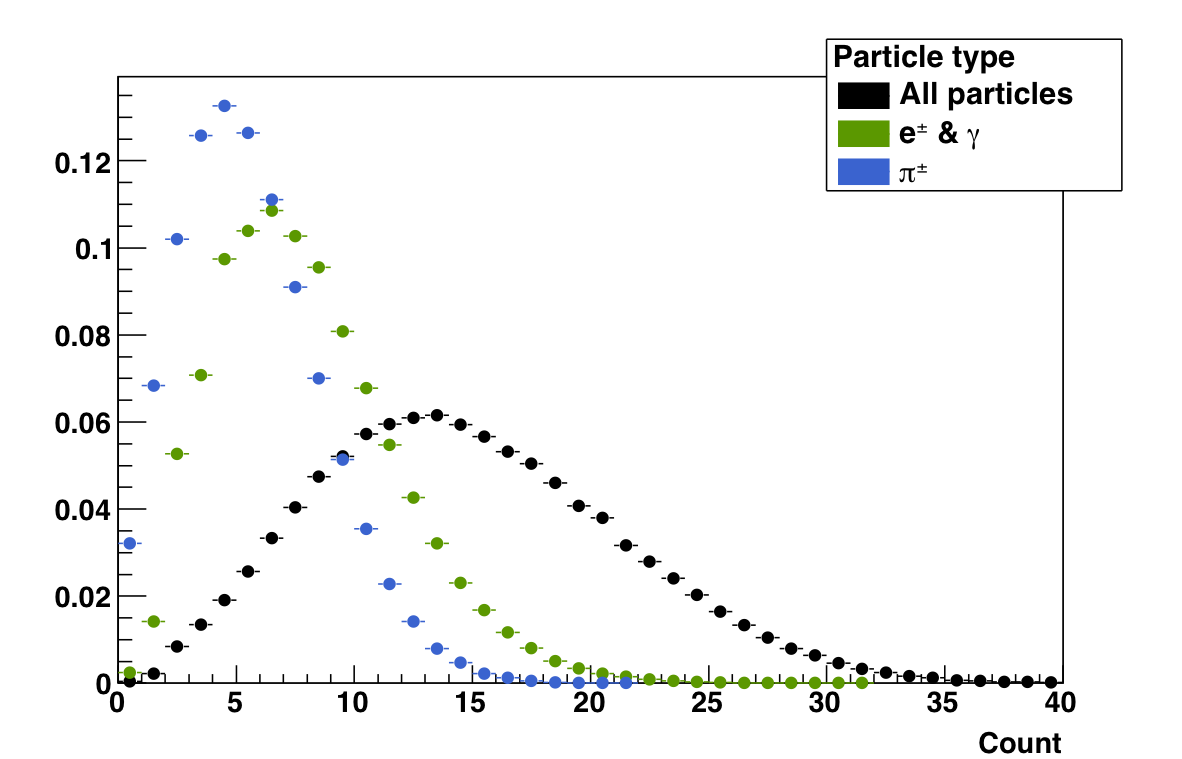PYTHIA studies for FMS jet finding
Before trying to do any jet-finding with the FMS, let's look at what particles actually end up in it. I used PYTHIA version 6.416 with tune A to simulate 200k p + p events at 250 GeV + 250 GeV. I don't (can't) do a full trigger simulation, but I filter events for those that are "the sort of events" that would pass the trigger. This is the same "pre-filtering" done in the FMS simulations before passing events to Geant. Some details can be found here: drupal.star.bnl.gov/STAR/blog/tpb/2011/sep/19/fms-trigger-filtering-pythia-simulation. I use the "board sum" filtering as described in the linked page (see figure 3 therein). Therefore, the events presented here are not an unbaised sample, but a sample with a significant amount of energy directed toward the FMS.
The (x, y) position of the intersection of particles with the FMS, weighted by their energy. Note that no account is made for the deflection of charged particles in the magntic field. The overwhelming majority of the energy falls in the inner (small cell) detectors (approximately |x| and |y| < 50 cm):

Here are the types of particles intersecting the FMS, normalised to per-event. Unsurprisingly, it's mostly photons (PDG code 22) and charged pions (PDG code 211). I included everything (including things like neutrinos!) for coding simplicity, and don't distinguish where things come from (e.g. direct vs. pi0 decay photons):

The same figures as "stacked" solid bars, so each colour patch gives the portion in that bin. It's a bit easier to see that we mostly have photons and charged pions in this format:

The above spectra are pretty, but a bit busy. Let's restrict ourselves to looking at EM particles (electrons, positrons, photons), which we can directly measure in the FMS, and charged pions, which are the majority component of the things we can't. Here are the energy spectra for those, as well as summed over all particles:

The ratios of the EM and pion spectra to the total may be more instructive. The EM particles make up the larger fraction at very low and high energy, while pions are a larger portion in intermediate energies. Remember that this is summed over all events, and the energy splitting between EM and pions varies wildly event-to-event:

Here are the total number of particles per event intersecting the FMS, the number of EM particles and the number of charged pions. On average there are about 15 particles total; around seven photons and five charged pions.

The composition of the particles going toward the FMS depends on the total amount of energy. Here is the fraction of energy coming from EM particles as a function of total event energy toward the FMS:

EM particles make up a larger portion at lower total energies. Conversely, pions make up a larger fraction at larger energies.

- tpb's blog
- Login or register to post comments
